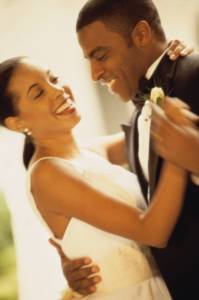Your Guide to Traditional Wedding Dances

Planning your wedding dances takes a bit of effort, but you will be rewarded with memorable moments you can cherish for a lifetime.
If you have been to a wedding or two, or maybe even been part of a wedding party, you have most likely watched as happy, newly wedded couples took to the floor in their first dance. Now you are getting married, and it is your turn to craft the same unforgettable memories with your new spouse. How do you schedule in the traditional wedding dances, set the mood with the right kind of music and ensure you look great and don’t trip over your own feet? A few handy tips on the customary wedding dances, along with some other useful pieces of advice, should help as you plan the night of your life.
Timing Is Everything
The first thing you will need to pin down is your reception’s timeline of events. Brides contributor Heather Lee published an online guide in 2014, detailing everything from the start of cocktail hour to the final song. While Lee’s layout assumes an evening affair, it can be adapted to your own wedding by shifting times earlier or later. Her model also separates the traditional dances, putting the couple’s first one shortly after the end of cocktail hour and placing the parent-child dances about an hour after that. The place of these dances in your own schedule is not immutable, and Brides writer Jamie Mackey’s suggests that you can either separate these dances or schedule them consecutively.
Your First Dance Together as a Couple
You and your sweetie will probably dance shortly after your guests have been seated for the reception. Typically, an emcee will introduce your wedding party first before announcing you as a couple, after which you will transition right into the first dance. You will want to think about the song you choose and the dance style you use to craft a memorable moment.
How do you select “the” song to accompany you and your partner as you move across the floor? Washington Post writer Megan McDonough has some great suggestions:
- Choose a tune with sentimental value
- Listen to your collections on shuffle and wait for inspiration to hit
- Ping friends or family members closest to you for recommendations
- Ask your disc jockey or the live band you’ve hired for advice
Finally, McDonough notes that your reception venue can provide some cues for the perfect selection. A rustic location might prompt a favorite country track for you to use, and offbeat locales could give rise to equally offbeat songs.
No one’s expecting you to move as smoothly as The Weeknd or to have Jennifer Lopez’s grace and dexterity, but dance lessons may be in order if you’re inexperienced or feel like you have two left feet. When shopping for a studio or instructor, be sure to read online reviews and meet with the staff in person. Offbeat Bride advises starting your lessons at least six to eight months prior to tying the knot.
Incorporating Parent-Child Wedding Dances
Traditionally, most weddings include a father-daughter and a mother-son dance. As with many other customs in the modern age, more couples are adopting personalized approaches and even deciding whether to include them or not. Some same-gender couples are ditching this practice altogether, and there’s always the question of what to do in the case of a deceased or estranged parent. You don’t have to limit yourselves in this regard, as you’re free to include grandparents, in-laws or other relatives. If you incorporate these types of dances, remember to choose suitable music.
Planning your couple’s and parent-child wedding dances takes a bit of effort. It is essential to pick the right songs, work these elements into your reception schedule, and be open to taking dance lessons if you need them. With some careful planning and arranging, you will be rewarded with memorable moments you can cherish for a lifetime.

